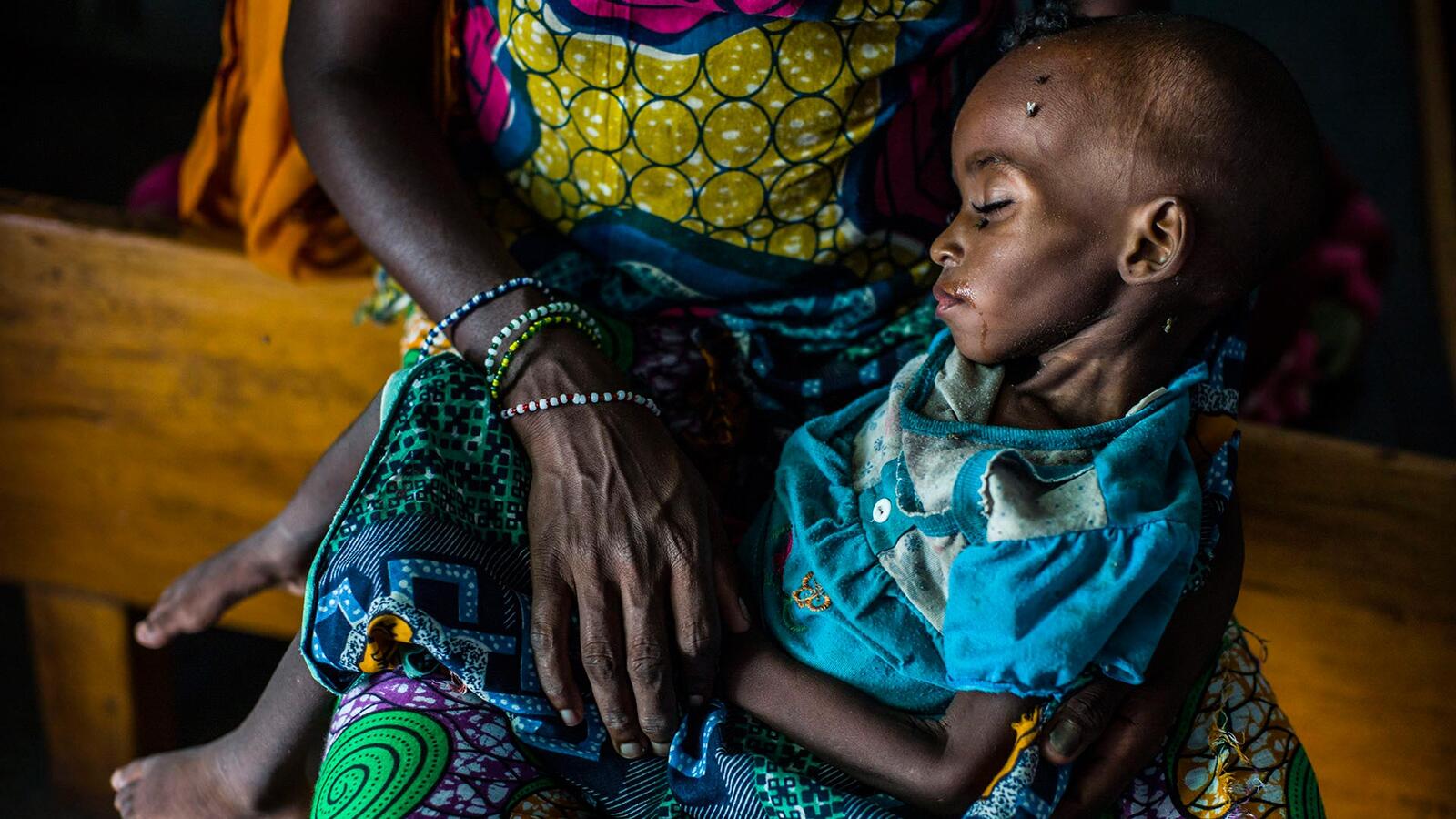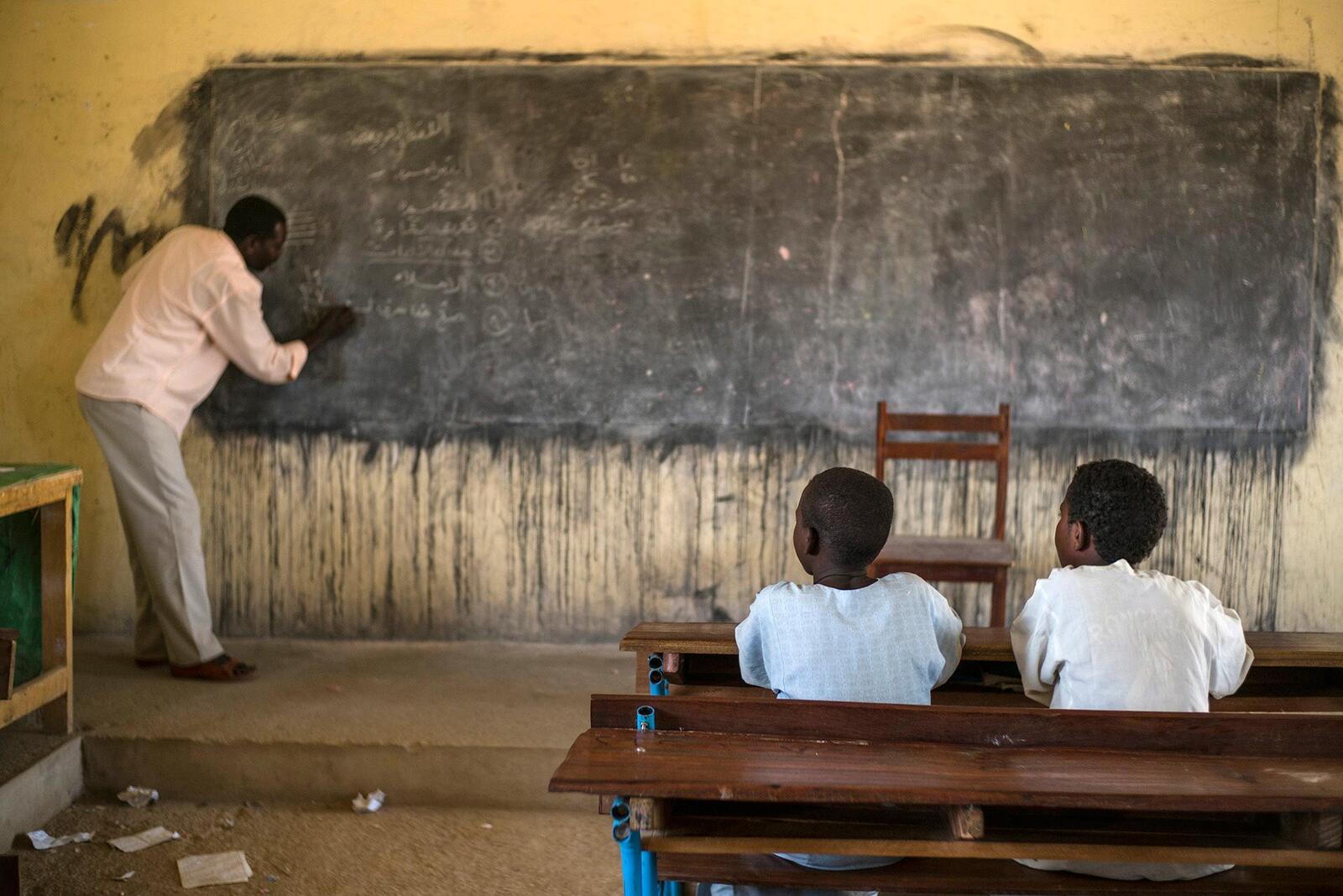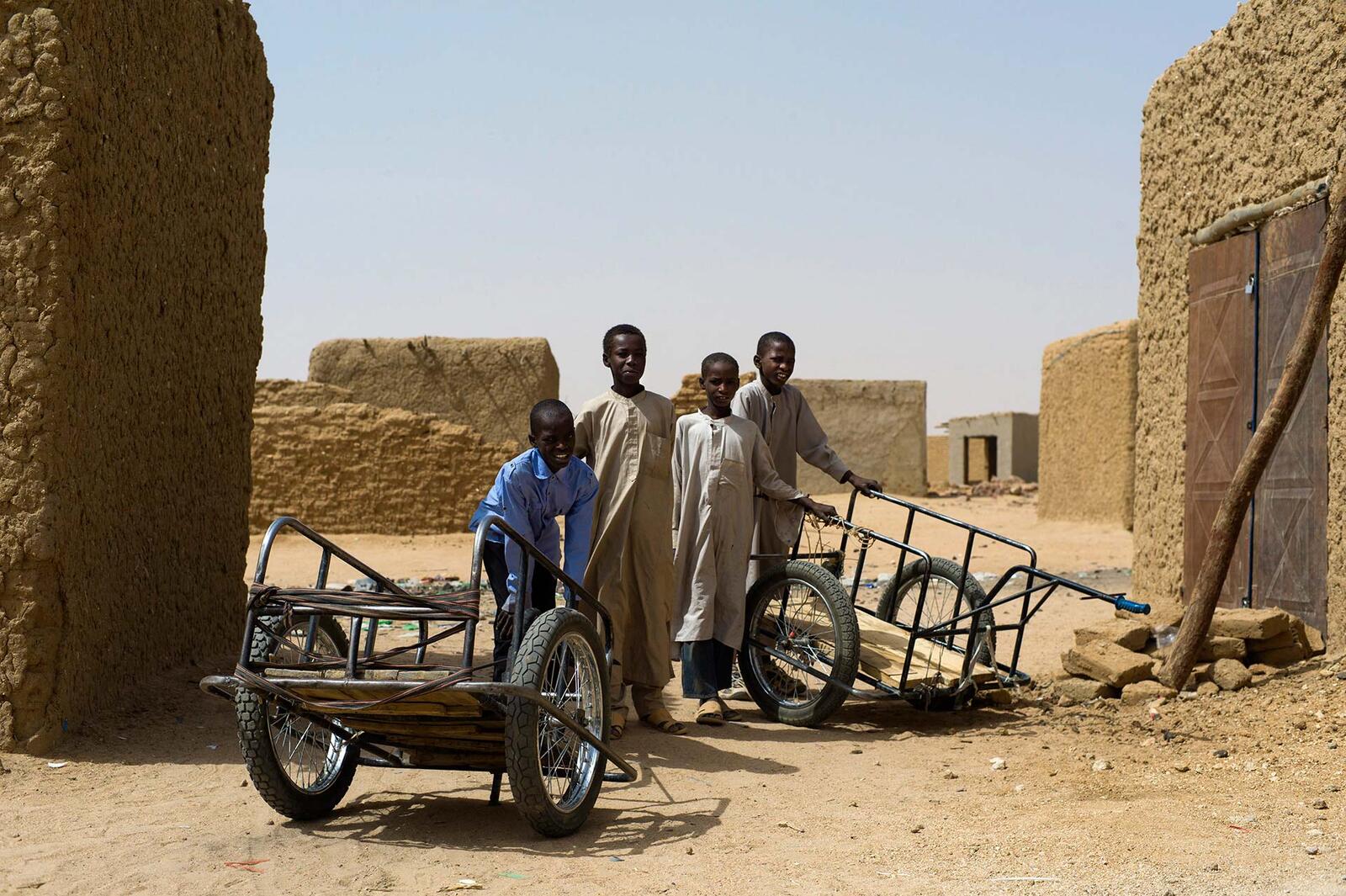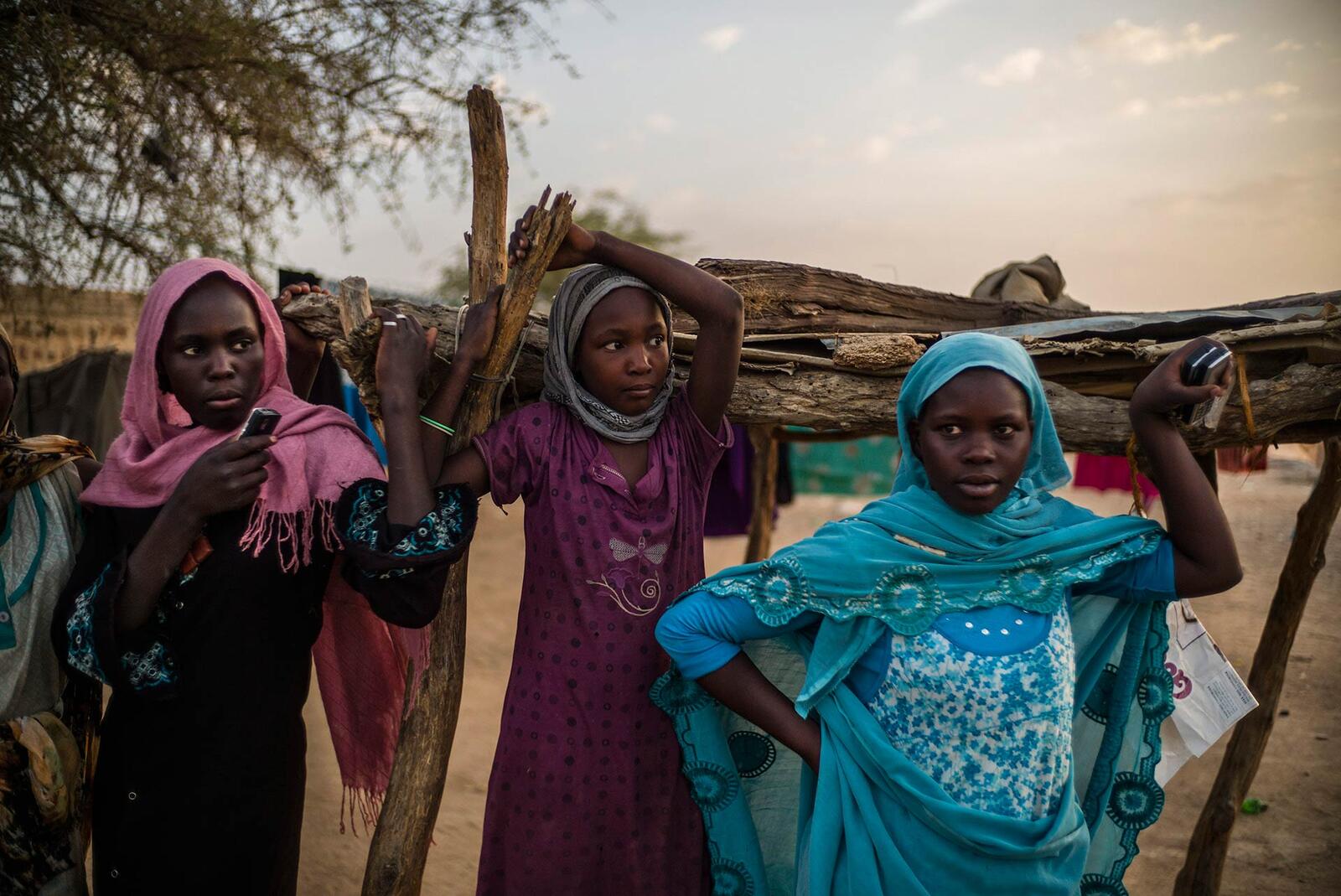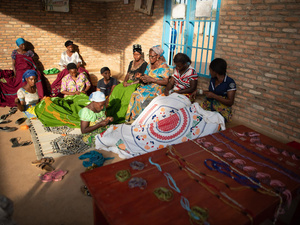Hunger, and hard choices, for Africa's struggling refugees

Hunger, and hard choices, for Africa's struggling refugees
Driven by fear, hunger and thirst, 24-year-old Habiba and her four children crossed the border to safety in southern Chad late one afternoon in May, ending a harrowing three-month trek through the Central African bush. At last, they had found refuge and soon would get help.
Upon arrival, Habiba was so weakened and dehydrated by her three-month ordeal that she was unable to breastfeed her two-month-old daughter, Ramatou. The tiny, malnourished infant was born deep in the forest, a month after the family had been forced to flee their home in Bouguere, in the strife-torn Central African Republic.
"The children were always hungry," a famished and exhausted Habiba said a day after arriving in Chad. "We would walk for kilometres in search of water. I gave birth to my daughter in the bush, in the middle of the forest. But I had nothing to eat, so I have no more milk."
Habiba and her children are among thousands of desperate refugees arriving each week in Chad and along many other African borders in search of safety and life-saving help, including food. They join 2.4 million other refugees at some 200 sites in 22 African countries who depend on regular food aid from the World Food Progamme (WFP). But hunger doesn't always end at the border, as Habiba found when UNHCR staff helped transfer her to the Dosseye refugee camp in southern Chad.
At Dosseye and at least 50 other sites in nine African countries, a serious funding shortfall – compounded by security and logistical problems in some areas – is forcing cuts of up to 60 per cent in the daily food rations provided by WFP for nearly 800,000 refugees. As of mid-June, one third of all African refugees dependent on food assistance had been affected by ration cuts, the majority of them by more than 50 per cent.
"It is unacceptable in today's world of plenty for refugees to face chronic hunger or that their children drop out of school to help families survive," said UN High Commissioner for Refugees António Guterres.
Ertharin Cousin, WFP's Executive Director, added: "Many refugees in Africa depend on WFP food to stay alive and are now suffering because of a shortage of funding. So we are appealing to donor governments to help all refugees – half of whom are children – have enough food to be healthy and to build their own futures."
"It is unacceptable in today's world of plenty for refugees to face chronic hunger – or that their children drop out of school to help families survive," said UN High Commissioner for Refugees António Guterres.
WFP needs to raise US$ 186 million to maintain feeding programmes for refugees in Africa through the end of the year. Additionally, UNHCR is seeking contributions towards the anticipated US$ 39 million cost of providing nutrition support for malnourished and vulnerable refugees in Africa for the rest of 2014.
The ration cuts are taking the heaviest toll in Chad, Central African Republic and South Sudan, all with reductions of 50-60 per cent that affect a total of 449,516 refugees. Another 65,354 refugees have been hit by ration cuts of 25-49 per cent in Liberia and Burkina Faso. Nearly 9,900 refugees in Mozambique and Ghana have seen their rations reduced by 10-24 per cent, while another 263,000 refugees in Mauritania and Uganda have experienced cuts of less than 10 per cent.
The food ration cuts are most severe in Chad, Central African Republic and South Sudan.
Although several African nations face chronic food shortages, refugees are a particularly vulnerable group and any disruption in supplies is a major cause for concern. Like Habiba and her family, many refugees arrive malnourished and suffering from various nutrition-related disorders. Many require urgent supplementary feeding and other long-term care, particularly undernourished children.
Now, however, a lack of funding has forced WFP to take difficult and drastic action and confronted refugee families with some very hard choices. Some 300,000 refugees in Chad, primarily from Sudan's Darfur region in the east and from Central African Republic in the south, are among the worst affected. Their previous ration of 2,100 kilocalories has been slashed by 60 per cent, leaving refugees with a scant 850 kilocalories per day. The situation worsens by the day as hundreds of thousands of hungry refugees struggle to cope.
Unable to go home, many refugees remain in exile for years and even decades in what UNHCR calls 'protracted refugee situations.' Across Africa, hundreds of thousands of long-term refugees are in remote camps and other sites, where they are often totally dependent on international help and a sometimes precarious food pipeline. The camps in eastern Chad are a case in point. Although Darfur has largely disappeared from public consciousness in recent years, some 241,000 refugees from that region of Sudan are still living in a string of 13 isolated camps stretching along hundreds of kilometres of desolate border in eastern Chad.
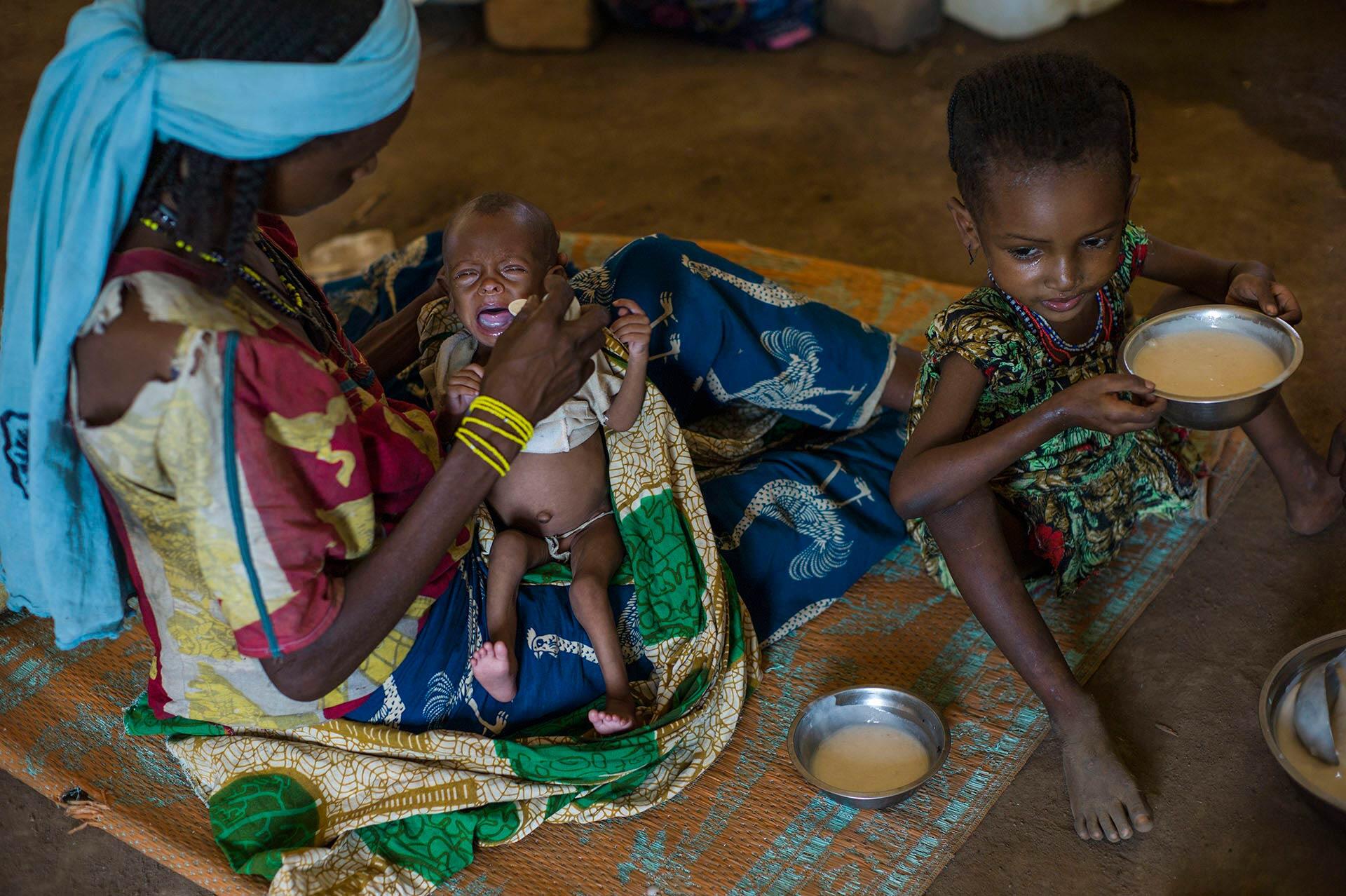
Habiba, 24, feeds porridge to young Ramatou, who was born deep in the forest as the fled Central African Republic. Both mother and child are struggling to survive.
Ensuring that all African refugees in far-flung camps – both new arrivals like Habiba and her family as well as those in protracted situations – get enough to eat is a mammoth task requiring hundreds of millions of dollars, incredibly complex logistics and sustained international support. Right now, that support is falling short and refugees are suffering as a result.
Insecurity has limited access to some sites, making it harder and costlier to deliver food rations to hungry refugees. In South Sudan, for example, conflict has cut off road and river access to some camps, forcing WFP to orchestrate costly airlifts and further depleting available funds. Immediate action is needed to ensure both humanitarian access and sustained funding.
A sustained, 60 per cent cut in refugee food rations can be catastrophic. But even a small reduction can spell disaster for vulnerable refugees already living on the edge of starvation.
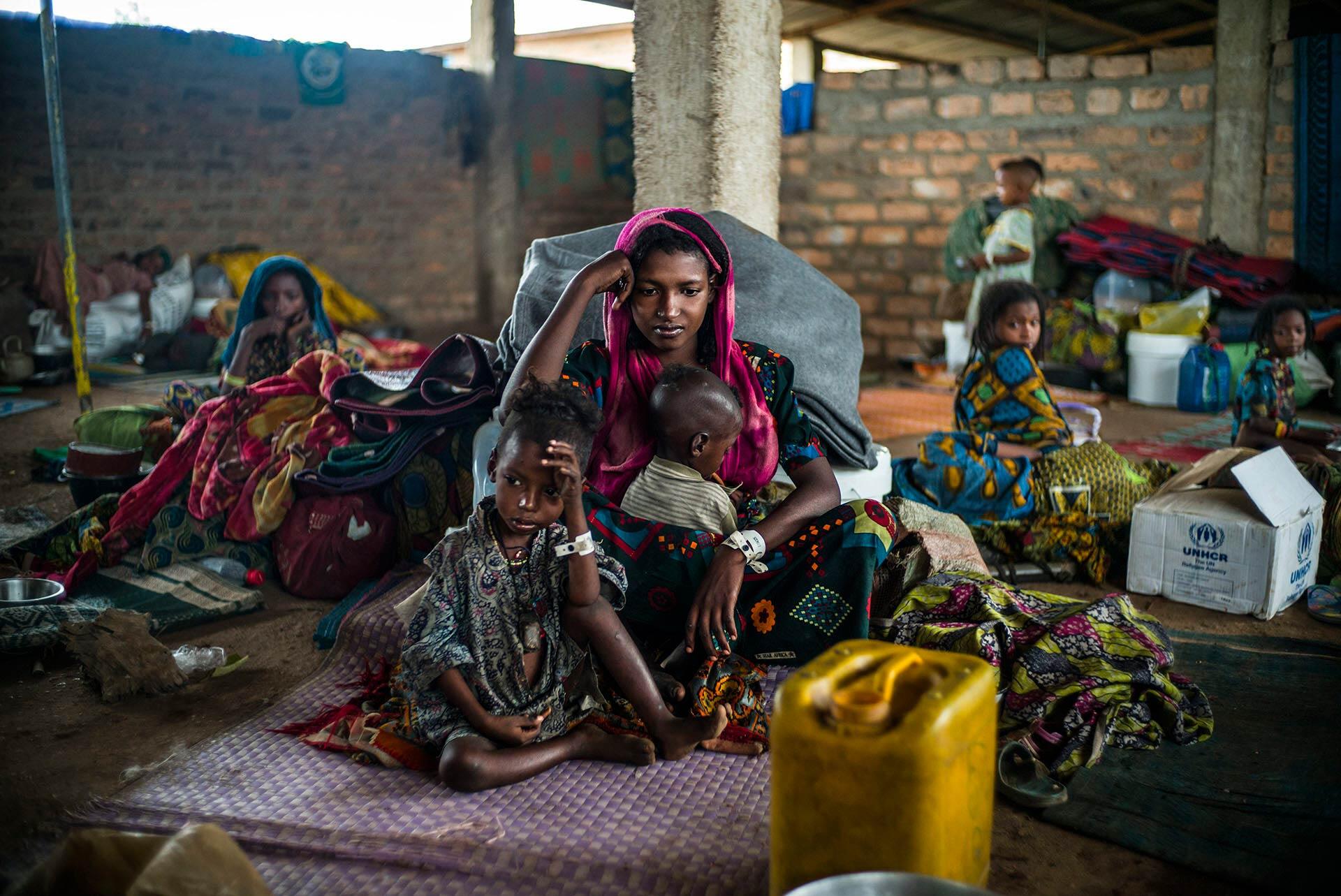
Hajara, 19, and her children await their first hot meal in over two months. They arrived in Dosseye refugee camp the previous day after fleeing violence in Central African Republic.
Undernutrition during a child's first 1,000 days from conception can have irreversible, lifelong repercussions, compromising both physical growth and mental development. Studies have shown that this "stunting" leaves affected children at a severe social and economic disadvantage for the rest of their lives. According to UNICEF, a stunted child is often inches shorter than a child who's had enough of the right kind of food. With weaker immune systems, they are more vulnerable to disease. And they're five times more likely to die from diarrhoea.
The risk to the child is even greater if the mother, like Habiba, is herself malnourished during pregnancy and then unable to breastfeed. That's why UNHCR hastens to identify the most vulnerable refugees and ensure that they get extra nutritional help through supplemental feeding programmes for mothers and children.
But the recent 60 per cent cuts in Chad mean that refugees can't get all the help they need. At Dosseye, for example, the health centre has run out of supplemental food stocks for pregnant and nursing mothers – items like extra flour, sugar and oil that could help Habiba regain her strength and her ability to breastfeed her baby. Now, frail Ramatou will have to struggle to survive without her mother's nourishing milk.
Undernutrition during a child's first 1,000 days from conception can have irreversible, lifelong repercussions – compromising physical growth and mental development.
"The human and economic costs of undernutrition are enormous, affecting most the very poor and women and children," according to a recent UNHCR/WFP technical paper. "In developing countries, nearly one third of children are underweight or stunted. Undernutrition contributes to over one third of all child deaths and increased frequency, severity and duration of infectious disease."
Even prior to the recent cuts, nutritional surveys in several African refugee camps between 2011 and 2013 showed that acute malnutrition, stunting and anaemia among children were at critical levels. Only one of 92 camps surveyed, for example, met UNHCR's goal of fewer than 20 per cent of refugee children suffering from anaemia. And fewer than 15 per cent of camps surveyed met the target of less than 20 per cent stunting among children.
Surveys also showed that global acute malnutrition rates among refugee children 6-59 months old remain unacceptably high in over 60 per cent of camps surveyed. This means these sites failed to meet UNHCR's target of a global acute malnutrition rate of less than 10 per cent.
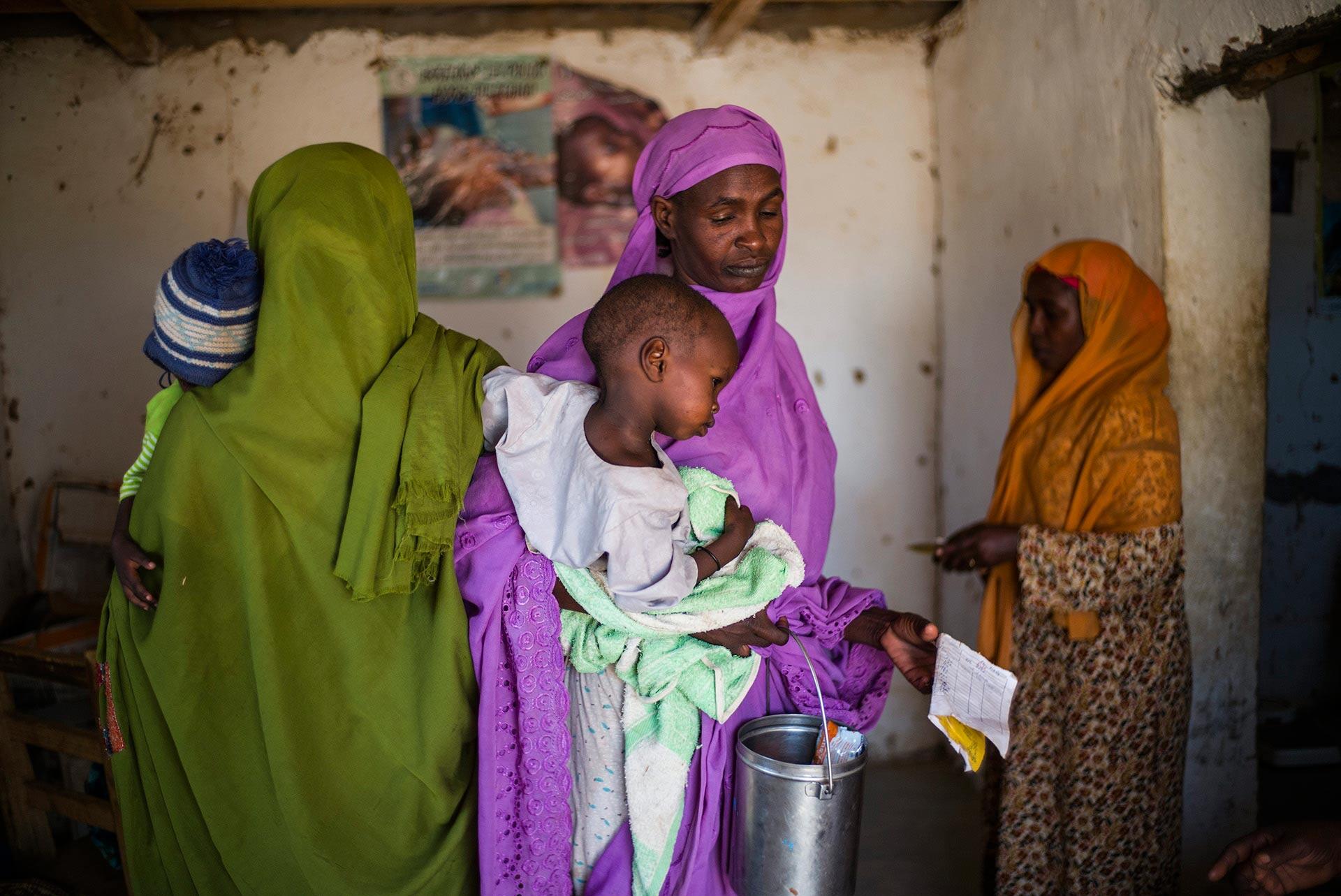
A Sudanese mother and son seek treatment in Chad's Iridimi refugee camp. The malnutrition rate in the camp is 13.7 per cent for children under age five.
Given the extreme vulnerability of refugees, UNHCR and WFP have made a concerted effort over the past five years to improve nutritional standards in refugee camps. This includes measures to prevent and treat micronutrient deficiencies that cause stunting, anaemia and other ailments. The micronutrient program has helped to slow and even reverse rising rates of these nutrition-related problems in some areas. But UNHCR says real success in combating widespread undernutrition among refugees will require sustained support and attention. And now the hard-won gains of the past five years could be lost due to the current shortfalls in funding and food.
Having fled their homelands with little more than the clothes on their backs, most refugees have few if any additional resources to make up for any reduction in food for their families. Their options are severely limited, particularly in camps where they have little or no access to work, agricultural or grazing land, or other means of self-sufficiency.
Some of them resort to so-called 'negative coping strategies,' triggering a range of additional problems. These include an increase in school dropouts as refugee children seek work to help buy food for their families; exploitation and abuse of women refugees who venture out of camps in search of work or land to grow crops; "survival sex" by women and girls trying to raise money to buy food; early marriage of young girls; increased stress and domestic violence within families; and more incidents of theft and other activities that raise tensions within camps and with surrounding communities.
"We are facing many difficulties since the food rations were cut in January," said Khatr Maghiba Adam, head of the women's refugee committee in Iridimi camp in eastern Chad. "We don't know what to do… Some women are not able to breastfeed; they have no more milk. Women leave the camp to work in Iriba and leave their children behind. We are calling for help."
Hadja and Fatima, both 16 years old, fled Darfur with their families in 2004 and have lived since then in Iridimi camp. With seven siblings each, they quit school and left the camp to search for work in the nearby town of Iriba to help their mothers feed the family.
"All my brothers go to school," said Fatima. "But I saw my mother suffering and I left school to help her. I am the oldest child."
"If the situation continues," says Abdel, a teacher in Iridimi camp, "soon there will be no children left in the schools."
Hadja, whose father left six years ago and whose mother is sick and unable to provide for the family, dropped out of 6th grade. Teachers in the camp say class sizes have dwindled since the rations were cut earlier this year.
"Today, only 26 children out of 59 attend class," said Abdel Alim Fadoul, a teacher in Iridimi. "The others are working at the weekly market in Iriba. If the situation continues like that, soon there will be no children left in the schools."
Hadja and Fatima have joined about 50 other women and girls from various camps who now sleep rough each night under a tree in Iriba. Each day they roam the dusty town looking for work; in the evenings, they pool their meagre resources to buy food for a communal meal. They make bricks, build walls, carry water and gravel, do domestic work, cut firewood and perform other chores – all for a few Sudanese pounds a day. Sometimes, townspeople take advantage of them.
"Some of the women we work for are mean; they send us away after we worked without paying us," said Fatima, who had just spent two days doing household chores without being paid.
Some of the girls who stay under the tree have resorted to prostitution to help feed their families. "There are girls who stay with us but disappear at night," Fatima said. "They receive phone calls and they leave… One even gave birth. We all know the situation, but we don't do that. We stay with the women here [under the tree]."
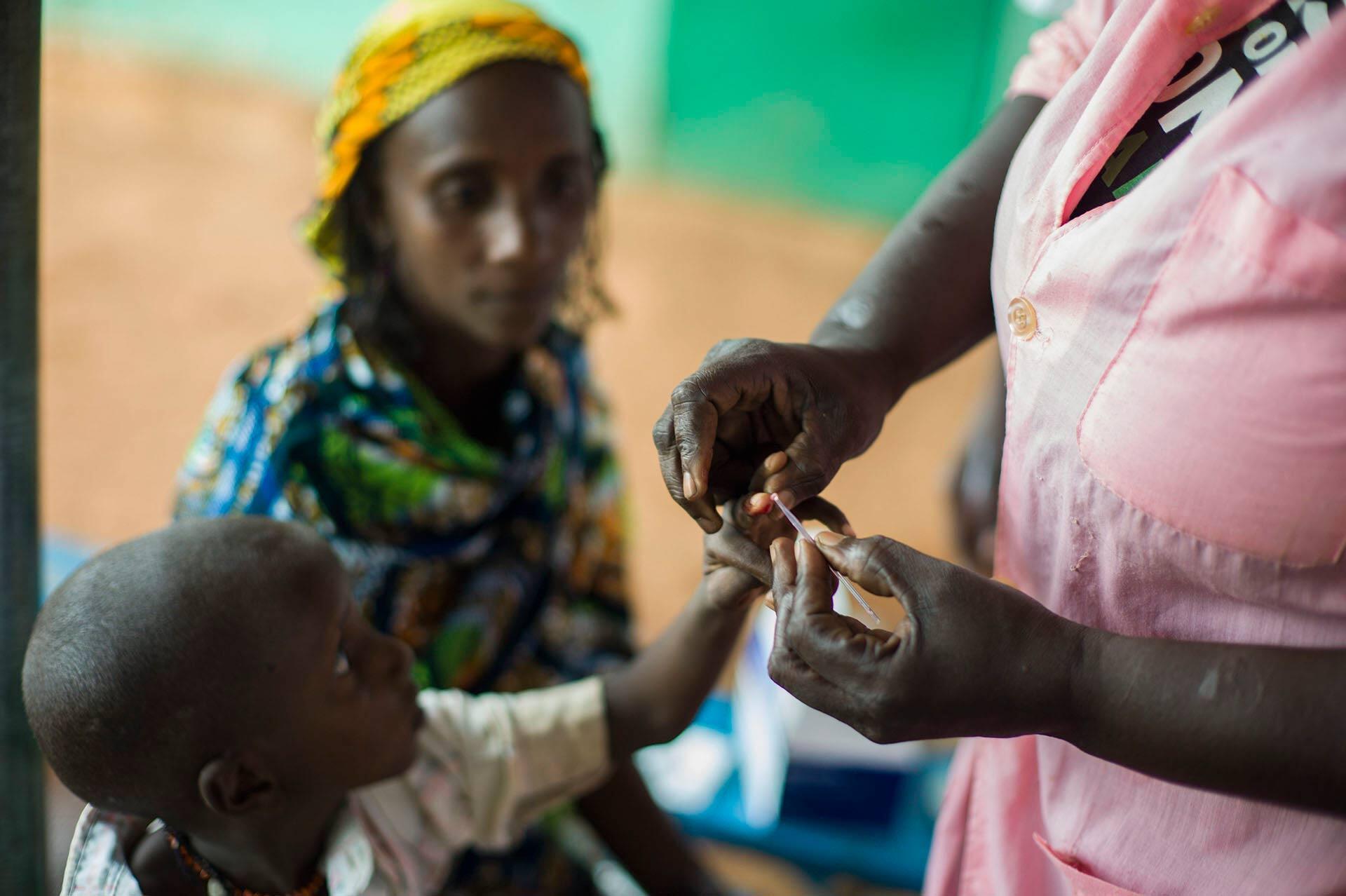
A young refugee from CAR is tested for malaria at the health centre in Dosseye camp. The food shortage affects malaria patients, who need an adequate diet for a full recovery.
Chronically hungry refugees face a vicious cycle of poverty, food insecurity, poor nutrition, heightened risk of disease and risky coping strategies. Improving nutrition and food security is crucial. That's why UNHCR, WFP, UNICEF and their NGO partners are embracing the most up-to-date approaches to nutrition and food security for the forcibly displaced and striving to improve services in related areas like reproductive health, malaria and child survival.
But all of this work requires sustained international support.
"The number of crises around the world is far outpacing the level of funding for humanitarian operations, and vulnerable refugees in critical operations are falling through the cracks," Guterres said.
Food security for refugees isn't solely a responsibility of donor governments. There is much that agencies on the ground, host governments, local authorities and the refugees themselves can do to stabilize the situation. For example, UNHCR and WFP are encouraging African governments to provide refugees with agricultural plots and grazing land to increase self-sufficiency.
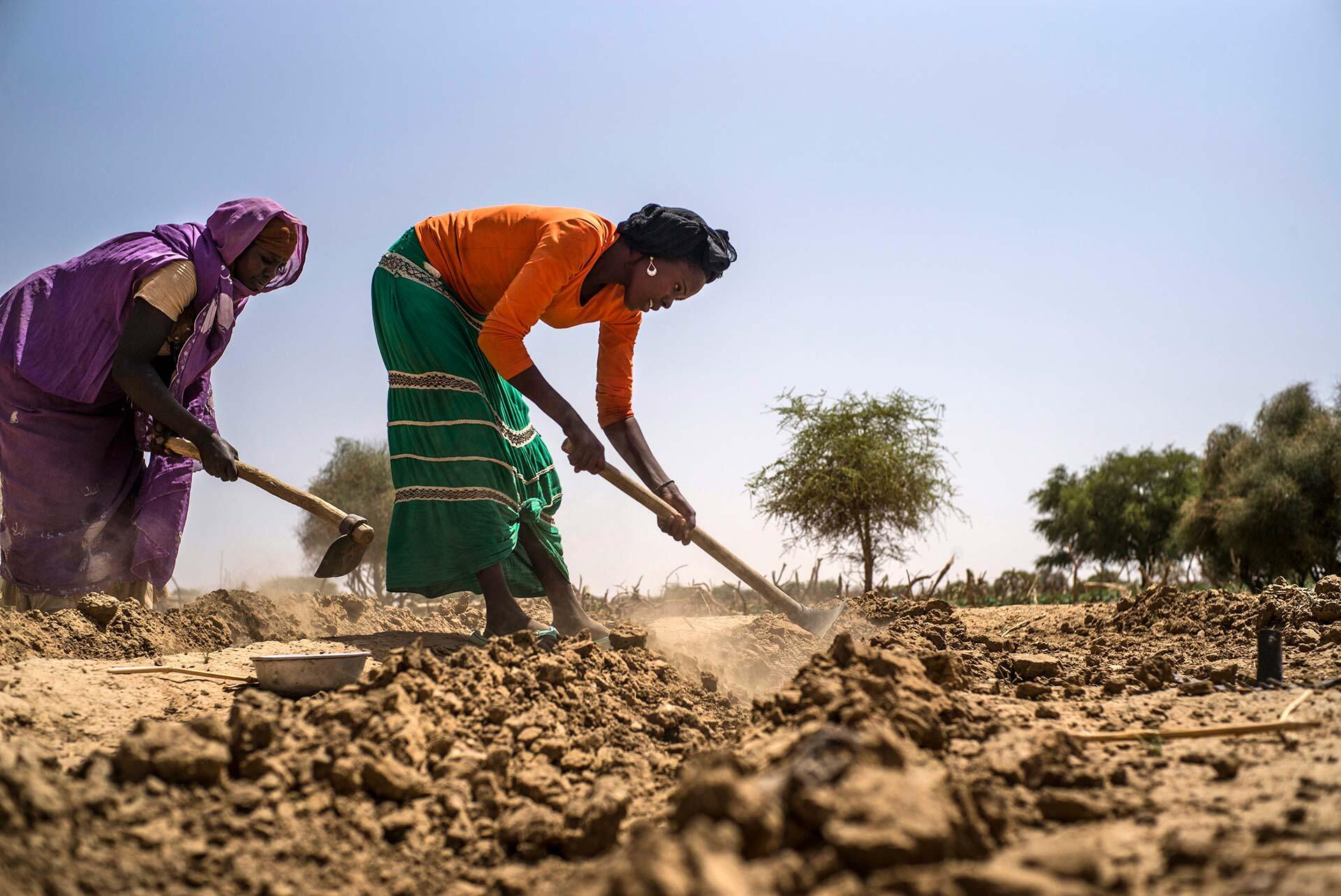
Facing ration cuts, Sudanese refugee women try to grow vegetables in Iridimi camp. But eastern Chad is extremely arid, and access to water is difficult, so agriculture is not a viable option for most refugees.
Refugees who fled from Central African Republic to southern Chad between 2004 and 2006 were granted plots of up to two hectares when they first arrived. This access to farmland has helped them feed their families, generate income to pay for their children's education and offset the current ration cuts.
A recent UNHCR survey of refugee sites in 30 African countries found moderate to high use of land by refugees for agriculture in 42 per cent of the sites. The same percentage reported that refugees currently have access to adequate grazing land in or around camps. Where viable, expanding such access could significantly boost self-sufficiency among refugees in other locations.
But with arable land scarce in many parts of Africa, UNHCR and WFP are also urging host governments and local authorities to grant refugees working rights and more access to local markets. These measures would benefit not only refugees, but local communities as well. The agencies are also determined to promote refugee self-sufficiency as early as possible in future emergencies, thus reducing long-term dependency.
With arable land scarce in many parts of Africa, UNHCR and WFP are also urging host governments and local authorities to grant refugees working rights and more access to local markets.
Other actions to promote food security include scaling up the provision of cash and vouchers for food assistance as a way to strengthen local markets. In protracted situations, the agencies will work with local authorities to promote refugee participation in small-scale enterprises to increase self-reliance.
Given the unpredictability of funding, the agencies are also refining their methods of prioritising those hit hardest by ration cuts to ensure that the most vulnerable are identified and receive the help they need.
All of these measures can help alleviate the impact of funding and food shortages over the long term. But that may be too late for tens of thousands of suffering refugees like Habiba, Ramatou, Fatima and Hadja. They need help now.


